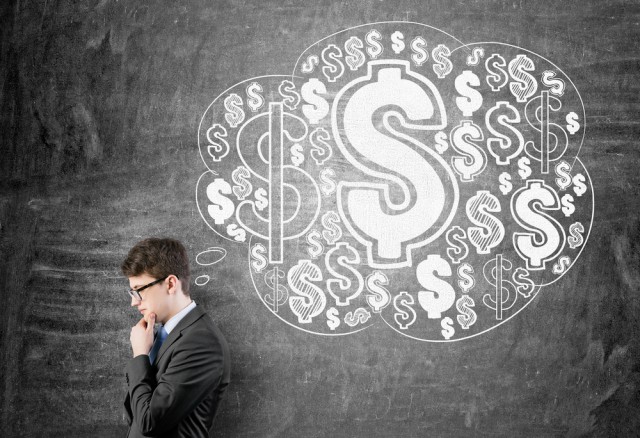
Inside the world of cyber incident investigations
Investigation of information security incidents is the last stage of enterprise protection and one of its most important parts, helping to minimize the damage caused by hackers and build defenses to prevent future incidents. The investigation assists in evaluating the security of the company's IT infrastructure and in formulating recommendations for its enhancement.
Incident investigation is a crucial component of any enterprise's information security framework. Merely monitoring the work of the security tools is not enough, as security incidents are happening all the time. Without a proper response to these incidents, the enterprise, in effect, lacks adequate information security protection.

Reframing the IT department: The new driver of business productivity
For decades, IT departments have been viewed as a siloed part of the business, designed to offer technical support, from resetting passwords to resolving hardware issues. While dealing with technical difficulties is a key aspect of the role for many IT professionals, the rise of digitized workplaces and solutions requires businesses to both re-evaluate and reprioritize how they view IT teams and their potential.
In our increasingly online, data-driven world, technology now facilitates almost every aspect of a business in some capacity. Effective use of these evolving systems is crucial not just for basic day-to-day functions but for communication, data analysis, and customer and employee experience, all of which are essential drivers of growth and productivity.

A clean bill of health: Harnessing data for precision healthcare
Unlike other industries, UK healthcare isn’t defined by how much revenue can be generated. Instead, success is measured in terms of achieving positive health outcomes for patients.
With new healthcare data available from a variety of sources -- such as wearables, clinical trials and biometric sensors -- healthcare is now driven as much by the promise of data processing and advanced analytics as it is by developing new and specialized drugs. So, how can healthcare professionals move faster, and gain actionable insights from the huge volumes of data they collect?

Borderless data: Acting locally, thinking globally
Around the world, data borders and regulations are being strengthened in a drive to protect customer privacy and fight cybercrime. As a result, multinational businesses are contending with a complex regulatory landscape. For business, data, and technology leaders, today’s challenge is to comply with local regulations while respecting customer expectations and managing complex global supply chains. To meet these macro and micro-economic challenges, organizations are looking for borderless data systems that enable global business operations but meet local demands.
The European Union’s General Data Protection Regulation (GDPR) has given rise to similar laws across the world, and the United Nations Conference on Trade and Development (UNCTAD) reports that 71 percent of countries have data protection regulations in place and 9 percent have legislation in development. Data governance professionals have increased their focus on data and cloud sovereignty in response, as some of these regulations restrict how data can be shared across physical national borders. In many cases, these regulations are positive and protect organizations and nations from criminals and aggressive states. However, today’s supply chains require data to be shared. A further complication is that cloud computing enables data sharing and business efficiency, yet the major cloud computing providers are firms from the USA. These businesses must comply with the US Cloud Act, which gives the US government access to data stored by these firms, even when hosting takes place outside of the USA.

Guarding your digital realm: Navigating the era of encrypted messaging and secure communication tools
In our modern hyperconnected world, we are constantly sending emails, instant messages, SMS messages, chats on social media, and much more to send information professional and personal. As each aspect of our lives continues to become digitized -- and as cybercrime gets ready to reach more than $10 trillion by 2025 -- it's becoming more important than ever to use encrypted messaging and secure communication tools to preserve our privacy.
Guarding your digital realm is thankfully more than viable with encrypted messaging and secure communication, in particular technologies such as end-to-end encryption, decentralized messaging platforms, and advanced privacy-enhancing features. To that end, let's talk about how these pioneering tools are playing a crucial role in protecting individuals, businesses, and journalists from cybercrimes.

Understanding large language models: What are they and how do they work?
In recent years, large language models (LLMs) have revolutionized the field of natural language processing (NLP) and artificial intelligence (AI). These sophisticated models are used widely in AI solutions, such as OpenAI's ChatGPT, and have been designed to understand and generate human-like text, enabling them to perform various language-based tasks. People are incredibly excited by the potential of this technology which is poised to revolutionize how we live and work. However, to understand the true potential of LLMs, it is crucial that people know how they function.
LLMs, at their core, are neural networks trained on vast amounts of text data. They learn to predict the next word in a sentence by analyzing patterns and relationships within the training data. Through this process, they develop an understanding of grammar, syntax, and even semantic nuances. By leveraging this knowledge, these models can generate coherent and contextually relevant responses when given a prompt or query.

Getting on top of spiraling cloud costs
Cloud computing has revolutionized the way organizations operate, enabling scalability and helping businesses remain agile in ever-changing landscapes. However, what may have originally been touted as a cost-saving solution has become increasingly difficult to manage.
Hyperscaler cloud services have the potential to offer huge cost savings due to their economies of scale. However, these savings may not always be passed down to customers. Moreover, the opaque pricing models of the larger service providers make the accurate estimation of costs difficult. The ease of provisioning resources in the cloud can also lead to significant overspending if not properly managed. Yet there are a variety of methods that can help cloud users better manage their increasing costs. Through the correct management, users can both reduce their cloud spend and better anticipate their monthly bill.

Securing business communication: Three must-haves for securely supporting employees in the digital workplace
No one would dispute that communication is vital, if not the most critical factor, to the success of any organization. But in the now not-so-new remote and hybrid work environment, it is harder than ever before to maintain the same level of communication, collaboration, speed -- and therefore productivity -- that was once available in the office environment.
As enterprises look to technology to navigate the challenges of remote and hybrid working, providing tools that help employees work in a safe and secure manner is now, more than ever, an enabler of business success. Equipping employees with full-featured mobile messaging and collaboration tools with built-in security, control, and compliance is essential for helping them safely succeed in the digital world of work.

How can companies leverage machine learning to mitigate cyber threats?
Cybersecurity has become one most crucial aspects of many organizations due to the speed at which cyber threats evolve. The "speed of cybersecurity" makes it vital to have timely and agile defense measures to detect, analyze, and mitigate cyber risks -- as it is the only way to stay ahead of attackers and protect assets in an increasingly dynamic and interconnected world.
New technologies like cloud computing and automation have led to transformative changes in cybersecurity, though these changes weren’t immediate. The use of the cloud within other IT teams advanced much faster than it did in cybersecurity departments, as security teams were hesitant to cede control to technologies in the hands of others.

The power of generative AI
Generative AI is the big trending topic right now, and understandably is featuring prominently in the news. The popularity of platforms such as Open AI’s ChatGPT, which set a record for the fastest-growing user base by reaching 100 million monthly active users just two months after launching is unquestionably on the minds of businesses globally.
These tools can increase productivity and efficiency by automating repetitive tasks and letting employees focus on higher-value work. They can foster enhanced creativity and innovation by assisting in brainstorming and ideation processes and generating novel solutions to complex problems. Today, AI’s applications have already been well-documented in fields such as eCommerce, security, education, healthcare, agriculture, gaming, transport, and astronomy. The business, productivity, and efficiency gains that it provides these industries are enabling them to flourish and open up new revenue streams.

Beginner's guide to investing: 7 tips for greater financial freedom
When you read any financial articles, most often than not they will recommend investing as one of the best ways to grow your wealth and enjoy a bit more financial freedom. While this may feel like just another to-do added to your plate, along with budgeting, paying bills, saving, and paying down debt, investing is something that you will likely find is worth your time.
Investing doesn’t have to be extremely time-consuming, or even extremely expensive. Here are 7 investing tips that may help you get started with investing.

Mastering eCommerce design: Key mistakes to avoid for enhanced conversions
In the current digital epoch, eCommerce has burst onto the scene as an essential ingredient of the commercial landscape. To keep pace with the surging tide of online shoppers, businesses must wield a potent eCommerce platform that unleashes the full potential of conversions. Nevertheless, crafting a triumphant eCommerce website demands more than a mere visually captivating layout and first-rate products.
When it comes to design, businesses often commit a plethora of blunders that can undermine conversion rates. To amplify your eCommerce conversions, we shall delve into some of these pivotal errors in this post and proffer guidance on how to evade them.

Seven mistakes of modern privacy programs
From high-profile data breaches (think Facebook’s Cambridge Analytica scandal that resulted in millions of people’s data being shared without their consent) to the introduction of legislation like the General Data Protection Regulation (GDPR), the data privacy landscape has evolved considerably in the last few years.
Though more organizations recognize the necessity of implementing a data privacy program, many modern privacy programs are missing foundational components required for full compliance, and attorneys and authorities have little sympathy for these privacy gaps.

Analyzing Identity and Access Management (IAM) through the lens of data management
An organization's identity data today is its linchpin. This invaluable asset binds an enterprise together, orchestrating access rights, establishing a unified and accurate view of users across various channels, and empowering informed security decisions.
However, the identity infrastructure is continuously becoming more complex as businesses expand their digital landscape, bringing more users, devices, and applications within their IT environment. With this increasing complexity, poor data management can engender substantial financial losses and jeopardize sensitive user and customer data.

Why fuzzing isn't enough to test your APIs
In today’s fast-paced development environment, a comprehensive API security testing strategy is no longer a luxury, but a necessity. Testing your APIs for security gaps ensures that your APIs functions are reliable, secure, and perform as expected under different circumstances. It helps to identify issues such as incorrect data formats, missing or inaccurate data, and faults in authentication or authorization.
Proper API testing can also help to minimize downtime, reduce the risk of errors, and improve the overall quality of the software system. However, it’s important to note that comprehensive API security testing is a discipline in and of itself.

